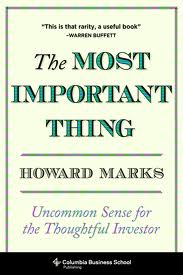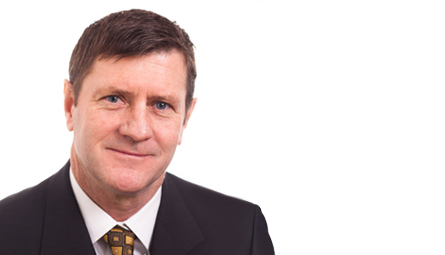Continuation of portfolio management highlights from Howard Marks’ book, The Most Important Thing: Uncommon Sense for the Thoughtful Investor, Chapter 18 “The Most Important Thing Is…Avoiding Pitfalls” Risk, Volatility
“…trying to avoid losses is more important than striving or great investment successes. The latter can be achieved some of the time, but the occasional failures may be crippling. The former can be done more often and more dependably…and with consequences when it fails that are more tolerable…A portfolio that contains too little risk can make you underperform in a bull market, but no one ever went bust from that; there are far worse fates.”
“You could require your portfolio to do well in a rerun of 2008, but then you’d hold only Treasurys, cash and gold. Is that a viable strategy? Probably not. So the general rule is that it’s important to avoid pitfalls, but there must be a limit. And the limit is different for each investor.”
Volatility, Psychology, Trackrecord, When To Buy, When To Sell, Clients
“…almost nothing performed well in the meltdown of 2008…While it was nigh onto impossible to avoid declines completely, relative outperformance in the form of smaller losses was enough to let you do better in the decline and take grater advantage of the rebound.”
“In periods that are relatively loss free, people tend to think of risk as volatility and become convinced they can live with it. If that were true, they would experience markdowns, invest more at the lows and go on to enjoy the recovery, coming out ahead in the long run. But if the ability to live with volatility and maintain one’s composure has been overestimated—and usually it has—that error tends to come to light when the market is a its nadir. Loss of confidence and resolve can cause investors to sell at the bottom, converting downward fluctuations into permanent losses and preventing them from participating fully in the subsequent recovery. This is the great error in investing—the most unfortunate aspect of pro-cyclical behavior—because of its permanence and because it tends to affect large portions of portfolios.”
“While it’s true that you can’t spend relative outperformance, human nature causes defensive investors and their less traumatized clients to derive comfort in down markets when they lose less than others. This has two very important effects. First, it enables them to maintain their equanimity and resist the psychological pressures that often make people sell at lows. Second, being in a better frame of mind and better financial condition, they are more able to profit from the carnage by buying at lows. Thus, they generally do better in recoveries.”
Volatility is not the true risk; the true risk lies in what investors do / how they behave during volatile periods.
Mistakes, Creativity, Psychology
“One type of analytical error…is what I call ‘failure of imagination’…being unable to conceive of the full range of possible outcomes or not fully understanding the consequences of the more extreme occurrences.”
“Another important pitfall…is the failure to recognize market cycles and manias and move in the opposite direction. Extremes in cycles and trends don’t occur often, and thus they’re not a frequent source of error, but they give rise to the largest errors.”
“…when the future stops being like the past, extrapolation fails and large amounts of money are either lost or not made…the success of your investment actions shouldn’t be highly dependent on normal outcomes prevailing; instead, you must allow for outliers…"
“…the third form of error doesn’t consist of doing the wrong thing, but rather of failing to do the right thing. Average investors are fortunate if they can avoid pitfalls, whereas superior investors look to take advantage of them…a different kind of mistake, an error of omission, but probably one most investors would be willing to live with.”
“The essential first step in avoiding pitfalls consists of being on the lookout for them…learning about pitfalls through painful experience is of only limited help. The key is to try to anticipate them…The markets are a classroom where lesson are taught every day. The keys to investment success lie in observing and learning.”
“The fascinating and challenging thing is that the error moves around. Sometimes prices are too high and sometimes they’re too low. Sometimes the divergence of prices from value affects individual securities or assets and sometimes whole markets – sometimes one market and sometimes another. Sometimes the error lies in doing something and sometimes in not doing it, sometimes in being bullish and sometimes in being bearish…avoiding pitfalls and identifying and acting on error aren’t susceptible to rules, algorithms, or roadmaps. What I would urge is awareness, flexibility, adaptability and a mind-set that is focused on taking cues from the environment.”
Correlation, Diversification, Risk
“There’s another important aspect of failure of imagination. Everyone knows assets have prospective returns and risks, and they’re possible to guess at. But few people understand asset correlation: how one asset will react to a change in another, or that two assets will react similarly to a change in a third. Understanding and anticipating the power of correlation – and thus the limitations of diversification – is a principal aspect of risk control and portfolio management, but it’s very hard to accomplish…Investors often fail to appreciate the common threads that run through portfolios.”
“Hidden fault lines running through portfolios can make the prices of seemingly unrelated assets move in tandem. It’s easier to assess the return and risk of an investment than to understand how it will move relative to others. Correlation is often underestimated, especially because of the degree to which it increases in crisis. A portfolio may appear to be diversified as to asset class, industry and geography, but in tough times, non-fundamental factors such as margin calls, frozen markets and a general risk in risk aversion can become dominant, affecting everything similarly.”
Hedging, Expected Return, Opportunity Cost, Fat Tail
“…a dilemma we have to navigate. How much time and capital should an investor devote to protecting against the improbable disaster? We can insure against every extreme outcome…But doing so will be costly, and the cost will detract form investment returns when that protection turns out not to have been needed…and that’ll be most of the time.”








